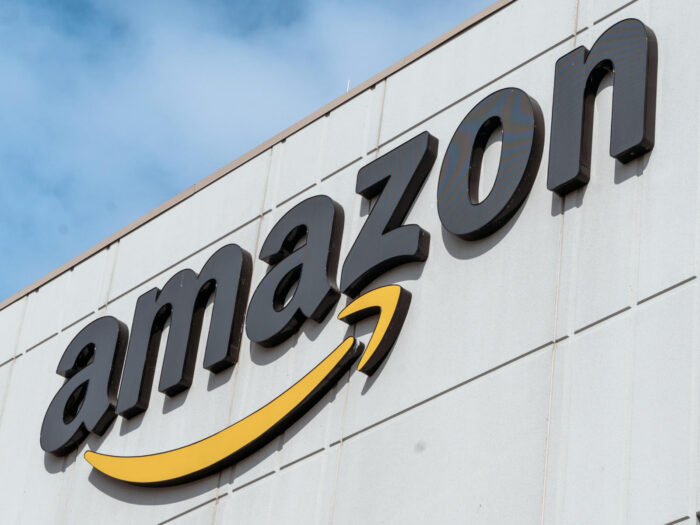
Amazon’s mission statement and vision statement guide business development while focusing on customers as the primary factor in designing, developing, producing, and providing the company’s goods and services.
The focus on customers reflects Amazon’s business purpose and how the company’s success depends on customer satisfaction. Customer satisfaction defines the business goals and strategic objectives that are implemented based on the company’s mission statement and vision statement.
Amazon’s mission and vision statements support strategic competitive advantages over other IT and consumer electronics firms, like Google (Alphabet), Apple, Microsoft, and Samsung, as well as retail and e-commerce companies, like Walmart, Aldi, Home Depot, Costco, and eBay. Amazon’s vision and mission also guide competitiveness against other entertainment content producers and distributors, including Netflix, Disney, Sony, and Facebook (Meta Platforms).
These competitors create the rivalry evaluated in the Five Forces analysis of Amazon. The company’s mission and vision position the business against such competition, but also provides the basic specifications for succeeding against rivals.
The company’s vision and mission statements influence subsidiaries, like Whole Foods Market. Amazon’s vision statement and mission statement unify its e-commerce, retail, computer technology and consumer electronics, AWS, AI, and other businesses and the operations of subsidiaries.
Amazon’s Mission Statement
Amazon’s mission is “to make customers’ lives better and easier every day by relentlessly inventing on their behalf. We work to provide broad selection, value, and convenience across a range of customer experiences, including online shopping, cloud computing, streaming entertainment, consumer electronic devices, advertising, healthcare, AI services, and more.” Amazon’s mission statement has the following components:
- Make customers’ lives better and easier every day (business impact and purpose)
- Relentlessly invent (business process and strategy)
- Provide broad selection, value, and convenience (value proposition)
- Provide a range of customer experiences (product mix)
Relating to business impact and purpose, Amazon’s mission statement puts emphasis on benefitting customers’ lives. Through this emphasis, the mission statement establishes goals for the business organization to ensure that its goods and services benefit customers.
Considering business effects on customers’ lives, this mission statement defines customer-centric goals that shape programs for Amazon’s corporate social responsibility (CSR), ESG, and stakeholder management.
Amazon’s mission statement also characterizes the company’s business processes as revolving around relentlessly inventing on customers’ behalf. This “inventing” indicates the significance of innovation in Amazon’s business development and long-term strategy.
Amazon’s value proposition is at least partially characterized in this mission statement in terms of the “broad selection, value, and convenience” that customers can expect and benefit from in using the company’s online platforms and in purchasing the company’s goods and services.
Furthermore, Amazon’s mission statement provides details affecting the development of the company’s product mix. For example, the company offers cloud computing, online shopping, entertainment, and consumer electronics, among other products.
The products enumerated in this mission statement relate to the products included in Amazon’s marketing mix (4P). For this marketing mix, marketing strategies and tactics are developed for the profitability of the product types stated in the company’s mission.

Amazon’s Vision Statement
Amazon’s vision is “to be Earth’s most customer-centric company.” This vision statement’s focus implies the goal of customer satisfaction in the retail, online services, entertainment, and IT business. The following factors are associated with Amazon’s vision statement:
- Lowest prices
- Best selection of goods and services
- Convenience in e-commerce and other online services
- Global industry leadership
The “lowest prices” factor for customer satisfaction linked to this vision statement guides the pricing strategies included in Amazon’s marketing mix (4Ps). Low prices are a selling point that makes the company’s goods and e-commerce platform and online services attractive to customers.
A corresponding strategic objective is to reduce operational costs to enable the business to minimize prices. Thus, this vision statement relates to Amazon’s generic competitive strategy and intensive growth strategies, which capitalize on low costs achieved through information technology.
Amazon’s vision statement also points to having the best product mix and selection to satisfy customers. For example, the wide selection of products on the company’s website and mobile app is a factor that attracts shoppers.
Moreover, Amazon’s vision statement emphasizes convenience, such as in accessing the company’s products via the Internet. This characteristic is a response to customers’ use of “convenience” as a criterion when evaluating the quality and attractiveness of online retail services.
The inclusion of “Earth” means that Amazon’s corporate vision statement pushes the multinational business to become a leader in customer satisfaction relative to all firms in the global market.
Congruence between Amazon’s Vision & Mission
Amazon’s mission statement and vision statement are congruent in focusing on customers. The company’s mission aims “to make customers’ lives better and easier.” Directly related is the goal of becoming the world’s most customer-centric company, based on Amazon’s vision statement.
This congruence establishes a clear path for Amazon’s business development and strategic planning. Strategies based on the mission statement can be readily adapted to suit the vision statement, and vice versa.
Future Direction of Amazon’s Mission & Vision
Amazon’s organizational structure (company structure) reflects the business needs in providing the goods and services enumerated in the mission statement. For example, the company has an executive for AWS and another for Amazon Stores, which correspond to the cloud computing and shopping components of the mission statement.
This influence of Amazon’s mission specification on the product mix and business structure means that new products added to the mission statement can lead to corresponding changes in the company structure to ensure adequate support for new product operations.
Amazon’s vision statement directs the company to focus on customers and lead the industry in doing so. However, the company needs to keep fine-tuning its goods and services to keep up with current and emerging customer preferences and needs.
The PESTLE/PESTEL analysis of Amazon presents some of the key trends and external factors that can influence how the company addresses customers’ needs and benefits their lives in order to fulfill the requirements of the mission statement and vision statement.
With these trends, the focus on customers in Amazon’s vision statement and mission statement also prompts for new products to satisfy new or emerging market opportunities that match customer preferences.
Some adjustments to the competitive advantages and competencies discussed in the SWOT analysis of Amazon may be needed for the success of new products and the company’s long-term success in providing its retail and e-commerce services, consumer goods, consumer electronics, AWS and related cloud-computing services, entertainment content and digital content distribution, and other products.
References
- Amazon.com, Inc. – Form 10-K.
- Amazon.com, Inc. – What We Do.
- Amazon.com, Inc. – Who We Are.
- Dhlamini, J. (2025). Setting the strategic direction: The role of the mission, vision, values statements and strategic leadership. Journal of Strategy and Management, 18(3), 591–615.
- Jaworski, B., & Cheung, V. (2023). Getting Started on the Journey: Mission, Vision, and Purpose. In Creating the Organization of the Future (pp. 55-64). Emerald Publishing Limited.
- U.S. Department of Commerce – International Trade Administration – Retail Trade Industry.
- U.S. Department of Commerce – International Trade Administration – Software and Information Technology Industry.